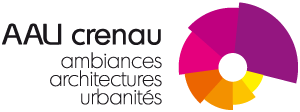Visual complexity of urban streetscapes: human vs computer vision
Résumé
Understanding visual complexity of urban environments may improve urban design strategies and limit visual pollution due to advertising, road signage, telecommunication systems and machinery. This paper aims at quantifying visual complexity specifically in urban streetscapes, by submitting a collection of geo-referenced photographs to a group of more than 450 internet users. The average complexity ranking issued from this survey was compared with a set of computer vision predictions, attempting to find the optimal match. Overall, a computer vision indicator matching comprehensively the survey outcome did not clearly emerge from the analysis, but a set of perceptual hypotheses demonstrated that some categories of stimuli are more relevant. The results show how images with contrasting colour regions and sharp edges are more prone to drive the feeling of high complexity.
Origine : Fichiers éditeurs autorisés sur une archive ouverte


